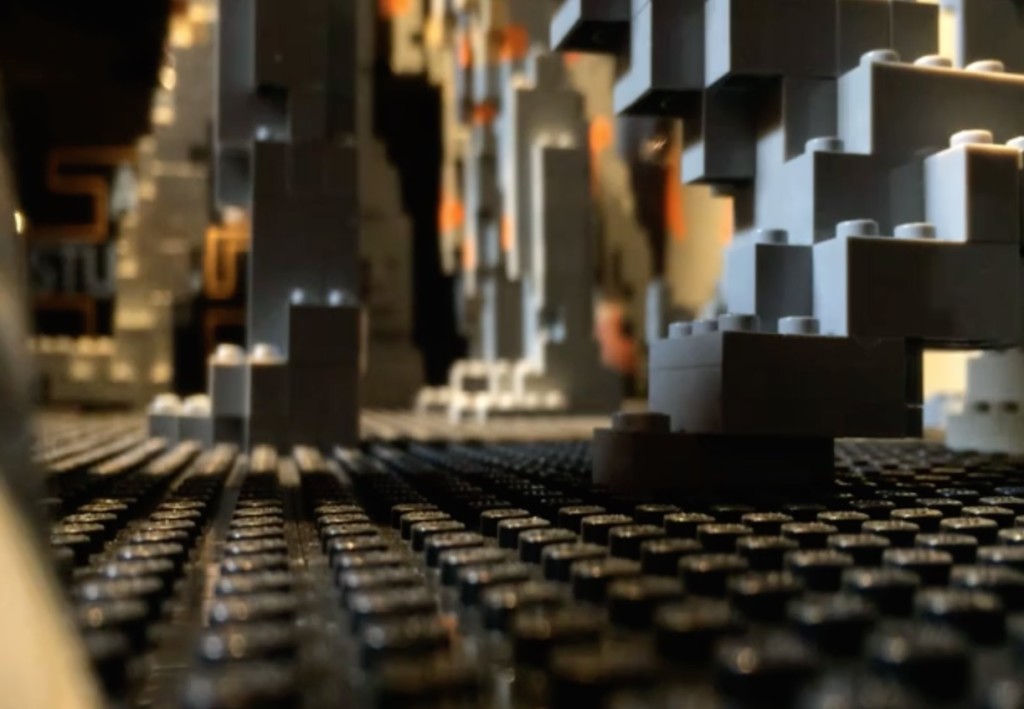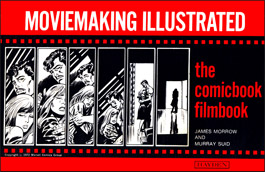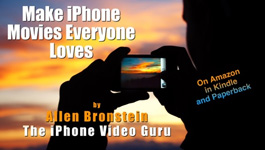Robert David Duncan has been at the forefront of using small cameras (aka smartphones) to shoot small movies, that is, videos running about two minutes or less. MobileMovieMaking interviewed him about his micro-movie approach here. In addition to making shorts, he’s the director of the Miniature Film Festival.
But always the trailblazer, Duncan has now entered the world of dual platform moviemaking: finished shooting “It’s About Love,” a feature-length movie shot with both an iPhone 5 and a Canon C-100 Mark II. Will this kind of hybrid movie become common in the days ahead? To find out we decided to ask the filmmaker who’s been there.
MMM: What made you decide to shoot your feature with both the iPhone and the Canon?
Robert: It was an easy choice to go with both platforms, because “It’s About Love” is about a filmmaker who is wandering around with his phone, making a documentary movie about the lives and loves of a group of inner-city park regulars. By having actual mobile phone footage, we can inter-cut real phone footage with the more cinematic footage where it enhances the story.
MMM: Recently, you wrote a blog titled “Why I Love Shooting With Small Cameras,” by which you meant smartphones. You blogged about the many advantages of shooting with a mobile.
Robert: Right. I touched upon four reasons: 1) Availability (the phone’s always with you); 2) Mobility (it’s easy to move the camera, especially coming close without being obtrusive); 3) Simplicity (you can achieve sophisticated results with greater ease than using conventional tools); and 4) Adaptability (if needed, you can bulk up your mobile with gear, such as add-on lenses).
MMM: So if it’s that terrific, why didn’t you just shoot your entire feature with a phone?
Robert: I wanted the film to have the best long term potential in terms of its cinematic quality, which meant using the Canon and higher-end lenses. I wanted to build a nice cinematic film that wouldn’t have anything to explain or apologize for on a really big screen. But at the same time, I love the mobility of the mobile camera, and the fact that I could record an entirely parallel version of the film with the iPhone.
MMM: In other words, you wanted the video shot by the amateur filmmaker to look like it came from a phone?
Robert: Yes, but there’s a lot more to it. Using the phone also gives me additional potential product options, such as serializing the story in a web series format or cutting some shorter versions if I wanted to. I enjoy doing my own editing with phone footage because it’s manageable in terms of file sizes and complexity. It’s like I get to walk away with my own personal experimentation sandbox to play with on the side while the editing team and I work with the more complex cinematic product.
MMM: But was there a problem when integrating high-end video from the Canon with the mobile-shot footage?
Robert: Not at all. The iPhone 5 produces reasonably large data files. Audiences will accept the quality, as we learned from “Tangerine.” In fact, it’s a pleasant surprise seeing the mobile footage next to the bigger camera’s footage. There’s a certain brightness and simplicity that comes from the shortcuts that the phone’s default logic uses, and with the control you get from apps like Filmic Pro, you can produce something that looks really sweet. We’re still exploring options about exactly when and where to integrate the footage together, and it may not even be necessary to make a point visually about which is which.
MMM: When will we be able to see “It’s About Love”?
Robert: We are still in the early days of post-production, and we are planning to have something ready for festival audiences within the coming year. The team will be working very hard. People can follow our Fat Punk Productions Facebook page for news on “It’s About Love” and our other film projects. We appreciate the interest!
MMM: What’s up after that?
Robert: Well, in addition to directing this feature length film, I also got to be second camera working alongside Ron Heaps, our talented director of photography who was helming the big unit. Ron is a great teacher, and very sharing of his experience and knowledge. I’ve been cinematographer on several of my shorter films, but now I feel ready and eager to move myself and the mobile phone into first position on some bigger, more complex films. Our next few projects like “Mustang Ride” and “Fat Punk” will be shot on an iPhone 6S+ and I will personally be doing most or all of the cinematography using that phone, with some extra lenses and other gear. I’m also happy to be a part of “Breathe Easy,” which is a global collaborative film effort where scenes are being filmed in multiple countries by many different directors. I will be filming my segment using the iPhone 6S+.
MMM: Any new techniques you’ll be experimenting with?
Robert: Some of my upcoming films like “Mustang Ride” and “Fat Punk” will make use of embedded micro short segments, which I recently blogged about in my post “Jewels in the Crown.” That’s where you can make a number of micro short films quickly, and have them on-hand to embed in a larger film work later in a way that enhances the story. The great thing about the micro short segments is that they can be shot and produced almost singlehandedly, giving you a lot more control over the larger project and its risk profile. It has actually been been really fun to see how each experimental technique we play with can be incorporated into our future work. I would certainly do more dual-platform work too, for sure!



 Previous post
Previous post
 Next post
Next post





